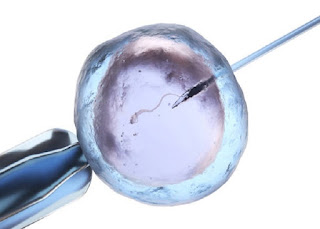How common are twins after fertility treatments?
When faced with fertility struggles, some couples think they’d
like to have “two at once” by hoping/aiming for a twin pregnancy. This
possibility stands out in many people’s minds from celebrities and friends who
have had twins after fertility treatments – and it is true that many fertility
treatments increase the chance a couple will have twins. While the chance of
twins is 1% in pregnancies conceived at home without interventions, almost
every fertility treatment has a higher chance than that. However, while twins
look cute in Christmas cards and may seem like a time- and cost-efficient way
to achieve your desired family size, it isn’t as simple or desirable as it may
sound.
How common are twins after fertility treatments?
The likelihood of twins depends on several factors, but primarily the treatment that a couple uses for conception. If a couple uses pills by mouth to augment egg release (either clomid or letrozole for “ovulation induction/stimulation”), the simplest medical approach to increase fertility, the chance of twins (or more!) is around 9%. A more aggressive ovulation induction approach, using injection medications such as Follistim or Menopur, can increase the chance of twins (or more) to more than 20%. In comparison, the modern approach to IVF has decreased the overall twin rate to around 7%, and this risk can be further reduced to as low as 2% by choosing to transfer one embryo at a time and keeping any other embryos frozen for future attempts. So surprisingly to many, IVF is the fertility treatment which can keep the risk of twins at its lowest.
What is the matter with twins?
While many people know twins who are healthy people, they don’t often know how tough their start to life might have been. 3 out of 5 twins are born premature, and around 1 in 4 end up admitted to the ICU after their birth. Stillbirth, birth defects, and dying in the first year of life are all more common in twins than in a single pregnancy. (The rates of all of these complications are even higher with triplets and quadruplets, with the chance of dying in the first year of life almost reaching 10% for quadruplets).
On mom’s side, the risk of
a hard pregnancy or a medically complicated one is much higher when she carries
twins. Blood pressure problems including preeclampsia and gestational diabetes
are almost twice as common with twins. Prolonged hospitalization may be
necessary because of these complications or because of the threat of preterm
delivery. More than 75% of women carrying twins will give birth by
Cesarean section, which brings its own risks and increased recovery time.
Postpartum hemorrhage and placental problems which can increase maternal blood
loss are more common with twins. Less risky but still quite bothersome are the
increased rates of excess weight gain, anemia, nausea and vomiting of
pregnancy, acid reflux, constipation, and chronic back pain.
For the family unit,
having a set of twins is associated with higher rates of divorce and financial
difficulties. The medical expenses alone are five times higher with twins (and
20 times higher with triplets or more). There are additional expenses which can
come with twins, such as addressing chronic illnesses that result from newborn
health issues and the need for special education if the child has cerebral
palsy or other neurologic impairments.
But what if I still want to have twins?
Even if twins are still
desired despite these noted complications, modern medicine is not perfectly
capable of achieving twins (with no more, no less) just because it is desired.
For instance, choosing an aggressive ovulation induction strategy with
injection medications increases the chance of twins, but the majority of
patients who get pregnant with this approach still have single babies at a
time. On the other hand, while twins may be the hope, a woman may end up with
triplets or quadruplets with this strategy, which would be certainly high risk
for the health of all involved.
With IVF, some couples may
also seek to have twins by requesting that two embryos be placed in the uterus
at the same time. The challenge with this is that two embryos transferred may
lead to a twin pregnancy, a singleton pregnancy, no pregnancy, or even a
triplet or quadruplet pregnancy (if one or both embryos splits into a set of
identical twins). There are even multiple published cases of women who ended up with
quintuplets after a two-embryo transfer from IVF! Because of the risks associated with these
multiple gestations, transfer of more than one embryo at a time goes against national standards of care for most women age 37 and younger. Thus at
CRE, we strongly discourage this approach except in rare circumstances.
What if I end up with twins or more when I do a fertility
treatment?
Historically, when a woman
conceived a multiple gestation, especially triplets or more, she would be
offered the option of multifetal pregnancy reduction or selective reduction.
Through this medical intervention, one or two embryos in a multiple pregnancy
can be terminated, which reduces many of the risks associated with the multiple
pregnancy. This backup plan was relied upon by many people before fertility
treatments got good enough to avoid many multiple pregnancies. For some women,
this approach may still be acceptable and of interest, but other women have
significant ethical or religious objections to this. Additionally, under Texas
S.B. 8, most Texas providers have stopped offering this procedure due to its
similarities to abortion, and we will not be able to refer you for such a
service. In light of this, avoiding a multiple gestation is the safest
approach, and we are very equiiped to help you to do that.
At CRE, we recognize that your parenthood journey has its own
unique needs and circumstances, so please schedule a consultation with Dr.
Collins or Dr. Saleh to discuss your specific situation or to answer any
questions you may have.




Comments
Post a Comment